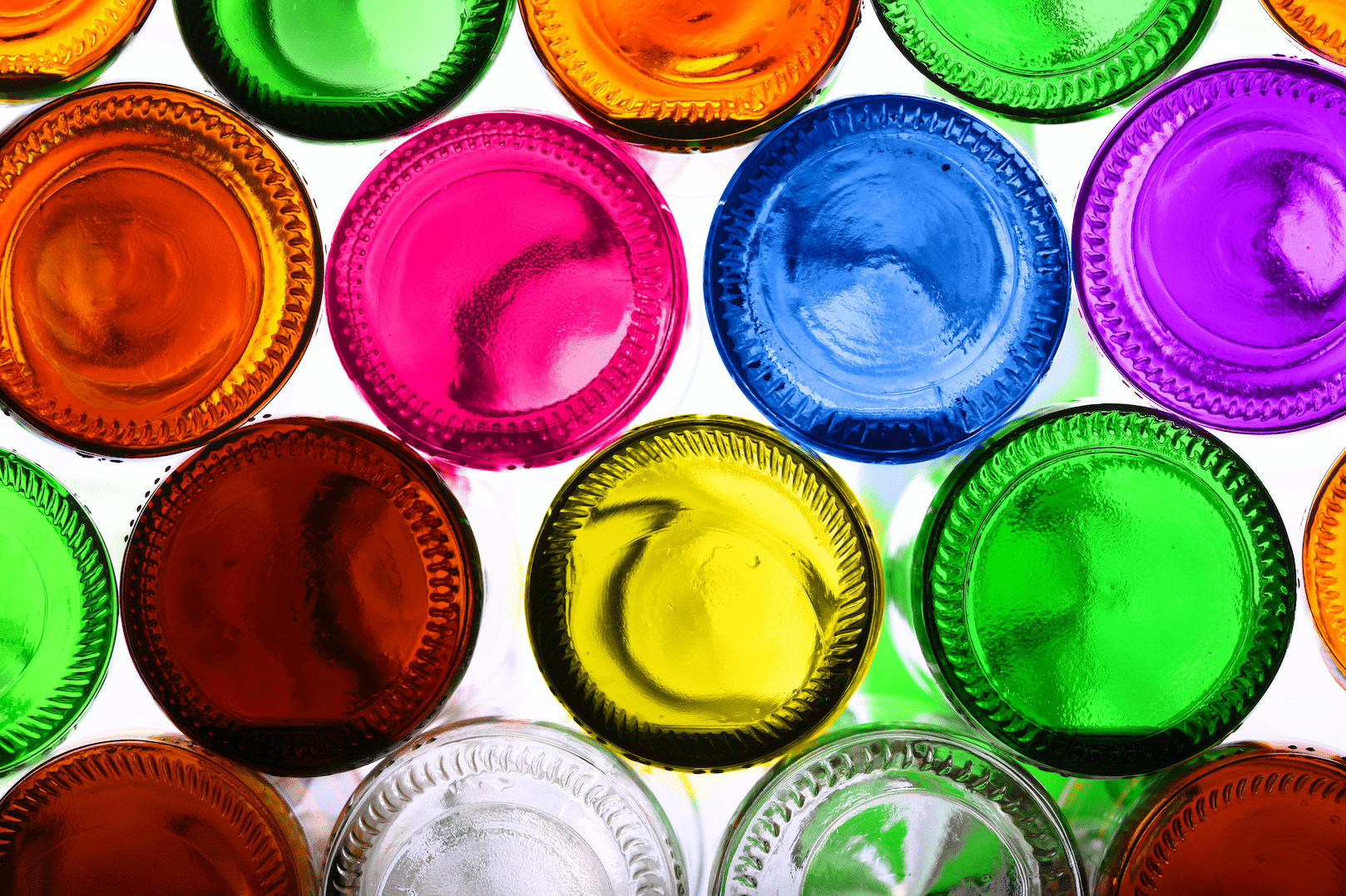It may come as no surprise to hear that one of the most frequently asked questions we get at Croxsons is ‘What does the colour of glass mean?’ We’ve put together a little post to answer all your questions.
Amber glass
We’ll start with amber glass, one of the most common hues for coloured glass containers. Amber glass is made by mixing sulphur, iron and carbon into the base glass formula. This glass colour is particularly useful when your product is light sensitive. The amber colour absorbs harmful UV wavelengths, protecting your product from light damage. A common beverage bottled in amber/brown glass is beer. As beer is a highly vulnerable to light, the light-filtering properties of amber glass make it an ideal choice for beer storage.
Green glass
Green glass is usually made by adding different elements to the mixture. Firstly, iron is added to produce a yellow colour. Then chrome is introduced to the mixture to create a blue colour. The combination of the two results in green glass. Red wine is often bottled in green glass as the tinted glass blocks out sun light and protects the contents from oxidation as it ages.
Clear glass
This brings us to flint glass, also known as clear glass. Clear glass used to be very challenging to make because it was difficult to get the necessary pure materials. Production started in 1662 when glassmaker George Ravenscroft started adding calcined flint (pure quartz rock) to his glass formula to create consistently clear glass. That’s why, even now, clear glass is often called flint. Clear glass is usually used for soft drinks, tonics, milk, food jars, and white wines. If you find wine in a colourless bottle, chances are it’s meant to be drunk now, as opposed to being stored and aged.
Social perceptions
Of course, it’s not just for technical reasons that food and drinks are in certain bottles. It has become social custom to associate different coloured glass bottles with particular food and drinks. We expect to see milk in a clear glass bottle, not brown or green. We expect red wine to be in a dark glass bottle, not blue. Therefore, the colour of the glass bottle complements its contents as part of our social norms.
Go bespoke
If you’ve crunched the numbers and your budget allows for it, why not create your own bespoke bottle. Minimum runs for a bespoke spirit bottle are around 25,000 bottles, making it more accessible than you might think. We can help you with embossed markings, indents and distinct shapes. Or why not create your own unique coloured glass, such as Bombay Sapphire blue? Social norms are boundaries that should be pushed, so think outside the box for your next project. As you’d expect, the costs to produce bespoke coloured glass are significant.
To ensure complete product satisfaction, we can also offer alternative decorative features such as printing, spraying, frosting and labels so you can get the effect you desire. We can even produce limited edition runs. At Croxsons, we work with customers from design to delivery to make sure your product is the best for your brand. After all, your packaging is your bottle.
If you’ve got a new project and are looking for a packaging and closures supplier, why not get in touch with Croxsons? We take the time to understand each and every one of our clients’ needs to deliver a quality product that is on brief, on brand and on time. Contact us today.
